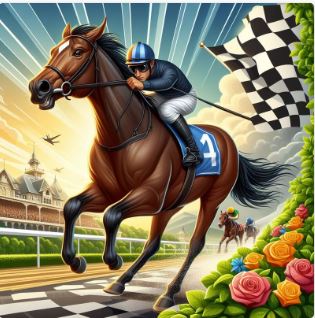PUREFORM
Australian Horse Racing
The Edge
We all want to be competitive in everything we do. And no more so that with punting on horse racing.
Success in punting on horses, in fact most things reduces down to an information war - the people with the best information make the smart moves.
Books have been and still are the best source of general information, and this applies at least as much in the art of racehorse selection and staking as in any other field.
Author Paul Segar has produced textbooks which cover all aspects of punting. The books alone stand as a complete reference but also provide 'food for thought'. You can develop / improve your own ideas as well as learn some new techniques.
Each book is written in plain English with plenty of practical examples in each chapter. Browse the contents of each book or email for further information, if required.
Improve your punting knowledge today - buy one or all of these
books.
Read the books but want more? It's time to do a course.
The Pureform Introduction Course uses a computer program to show you how and when to bet and how to do it successfully. Check out the details
The Benchmark Handicapper Course continues from the Introduction Course and gives you further weapons to apply when making quality value selections. More...
The Introduction to Dutch Betting using the Ratings Calculator Course gives you an introduction to betting using the Ratings Calculator computer software. More...
Buy all three books now:
$70 posted
Contents
Introduction
Target Betting
Markets
Savers
Overs
The Usual Punter
Unders
Where to Now?
3. Markets
Your own opinion.
The next level up is to calculate prices for each runner according to your opinion.
Exactly how this is done is not considered here but after some discussion, consideration and thought the following market was produced:
| Horse | Price | Percent | Available Odds | Percent |
|---|---|---|---|---|
| A | $3 | 33% | $5 | 20% |
| B | $5 | 20% | $2.5 | 40% |
| C | $7 | 14% | $4 | 25% |
| D | $12 | 8% | $16 | 6% |
| E | $15 | 7% | $7 | 14% |
| Totals: | 82% | 105% |
So far so good.
We have a market, some prices and some percentages. So let’s do some betting.
The new market totals to 82% compared to the available percent of 105%.
The calculated market should always be less percent than the available market.
Betting each horse to collect $100 using your odds for pricing and using the available odds betting all runners produces the following profit (or loss):
| Horse | Bet | Collect | Profit |
| A | $33 | $165 | $84 |
| B | $20 | 50 | -$31 |
| C | $14 | $56 | -$25 |
| D | $8 | $128 | $47 |
| E | $7 | $49 | -$32 |
| Total: | $82 |
So horse A produced a nice profit if it won ($84 profit) while Horse E not so good (-$32).

This is betting to collect $100.
Some punters like to bet to win an amount instead of betting to collect.
Subtract 1 from the $ price and then divide into 100 to get the amount to bet when trying to win $100.
Betting to collect is a more conservative approach.
Clearly, B, C and E produce losing results with horses A and D being profitable.
The question now is what to do with this market?
No one knows what the result is going to be otherwise everyone would bet on the winner!
So there are two solid options:
Either bet the good bets and then wager horses B, C and E as a saver bet or
Simply bet the horses that will make a profit (A and D).
The next sections consider the two options.

4. Saver
The idea of a saver bet is to return the stake or perhaps make a small profit rather than betting the full amount.
In the case of horse B, the quality of the bet is reduced based only on its price not on its real chance of winning (something that no one really knows).
You priced the horse at $5 but only $2.5 is available. It can still win but according to you, has a lesser chance.
The problem with a saver bet is if more than one horse is saved upon.
The amount bet on the saver(s) then also needs to be recovered.
Taking horses A and D for the win and saving on the favorite gives the following table:
| Horse | Odds | Available | Wager | Return | Profit |
|---|---|---|---|---|---|
| A | $3 | $5 | $33 | $165 | $97 |
| B | $5 | $2.5 | $27 | $67.5 | -$0.5 |
| D | $12 | $16 | $8 | $128 | $60 |
| Total: | $68 |
Saving on Horse B costs an extra $27 and if successful will return the stake (minus 50 cents).
In this case the bet only gave a more or less break even result.
Almost half the total outlay on the race was the saver bet on the favourite.
There is little point saving on the favourite if you have some faith in your market.
Additionally saving on the other two runners (horses C and E) complicates the whole problem even further.
Saving on a single longer priced lesser chance is a reasonable option.




